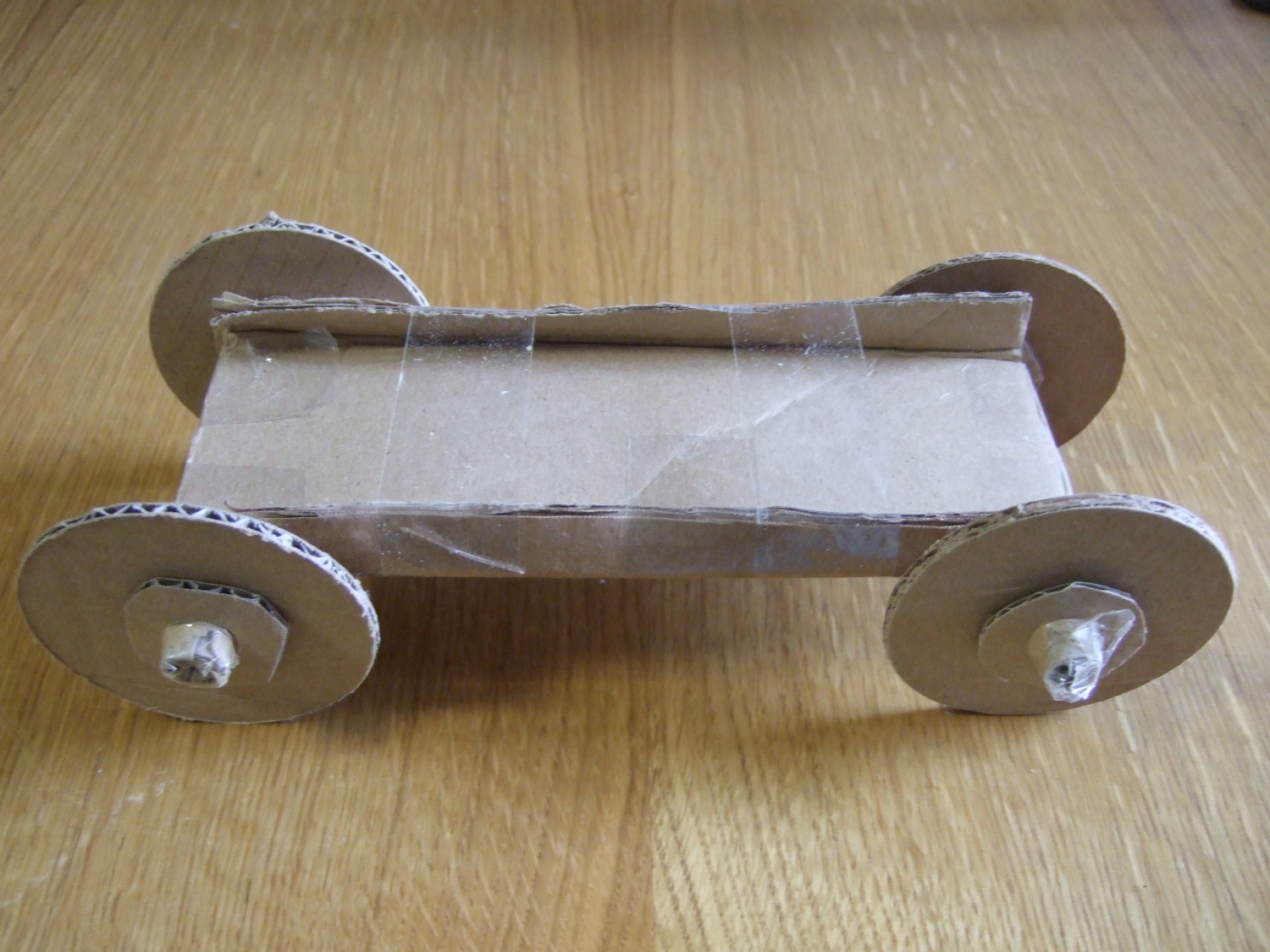Ingredients
 | Corrugated cardboard |  | Card tube |
 | Scissors |  | Tape |
Instructions
You want to build at least two cars with different sized axles, the details of the construction are not important and it may be easier to attach the wheels to the axle and allow the axle to turn, but this is what I built:
I built two cars with different sized axles. To make the test as fair as possible, I made both wheels out of corrugated cardboard and both axles out of toilet roll card so the friction between the wheel and the axle should be the same in both cases...
 |  |
| The car with large axles | The wheel is held on by a slightly smaller ring of cardboard which is held snugly onto the axle. |
For the smaller axles I cut a toilet roll in half long ways and then rolled the halves up very tightly to form the two axles. They then needed something to hold the wheels straight so I used a small disk attached to the axle.
 |  |
| The car with smaller axles | The wheel is held on using a smaller disk of cardboard. |
As a control I built a small cardboard sled, and all vehicles were loaded using an empty jam jar.
 |
| A cardboard sled with no wheels |
We then set about testing our cars by placing them on a board and raising one end. Using a protractor, we could measure the angle at which the car started to roll.
Result
In our case the sled didn' t move until it was tipped to about 20°, and the car with large axles moved at about 18°. This shows that wheels with large axles make very little difference to the friction.
However, the car with small axles started moving at around 10° showing a much reduced friction.
| | Testing the simple sled. It moves at over 20° |
| | Testing the car with large axles which moved at about 18° |
| | Testing the car with small axles which moved at about 10° |
Explanation
If you push a sled across a surface then then it will only move if the force you are pushing with is larger than the frictional force between the sled and the floor.
 | To move the sled you have to push(blue) as hard as the frictional force (red) |
The friction between two surfaces is dependent on the materials, and the force between them so the friction between the axle and the wheel should be the same in both cases.
If you have a wheel involved it acts a a lever. This means that the wheel acts a bit like a crow bar, so a small force at the edge of the wheel will overcome a larger force closer to the pivot. So a large axle will slightly reduce the
 | Due to leverage the force required to turn the wheel is slightly less than the friction between the axle and the wheel. It is like trying to pull on a crow bar very close to the thing you are trying to prise open |
If the axle is much smaller than the wheel, then there is a large amount of leverage, so you don't have to apply a very large force to overcome the same amount of friction.
 | The leverage means that you only need to apply a small force to overcome friction. It is like pulling a crow bar a long way from the thing you are trying to prise, so the leverage works strongly in your favour. |
So the really clever thing about a wheel, isn't really the fact that it is round, but that the axle is so much smaller than the wheel!










Comments
Add a comment